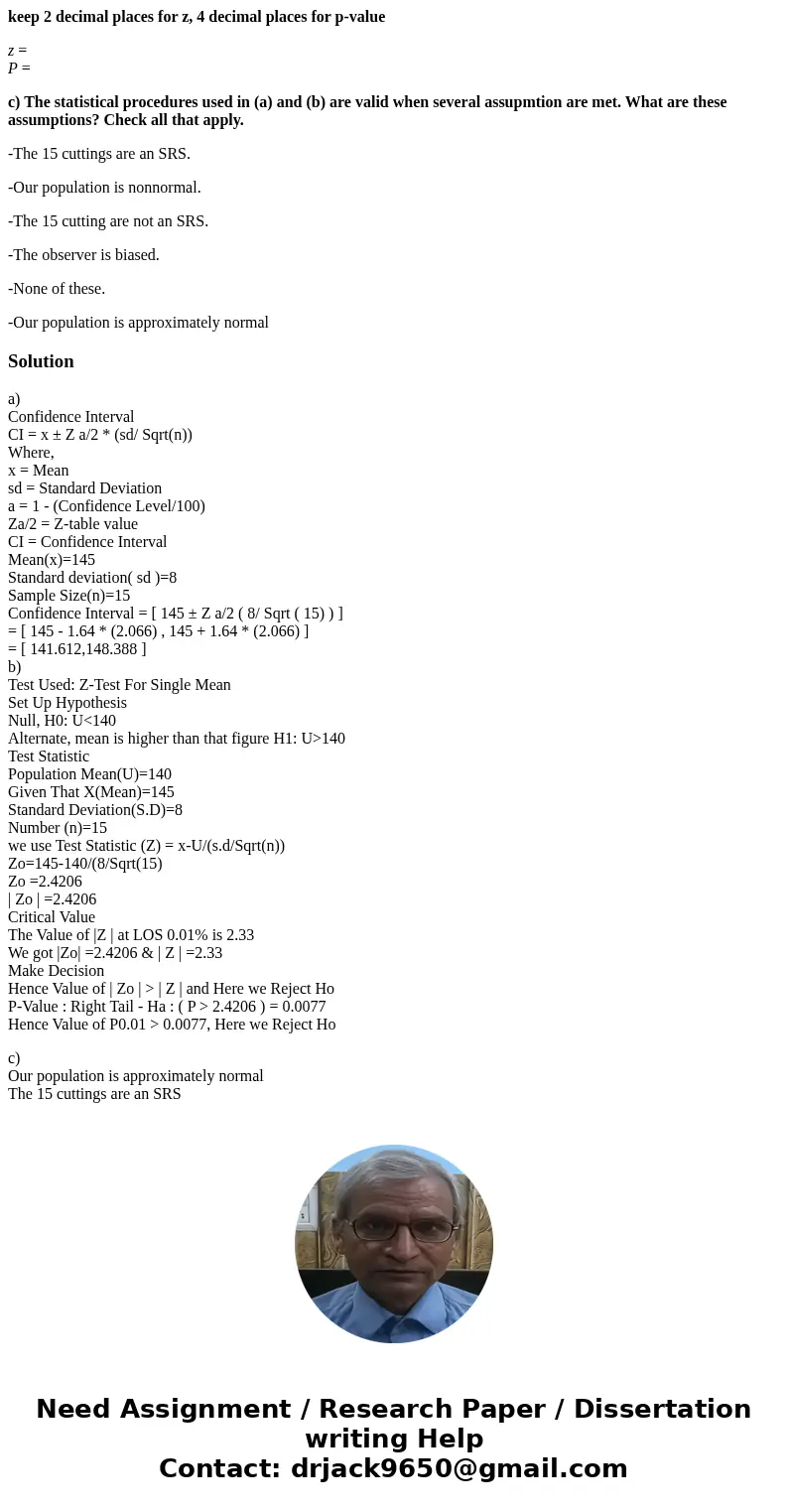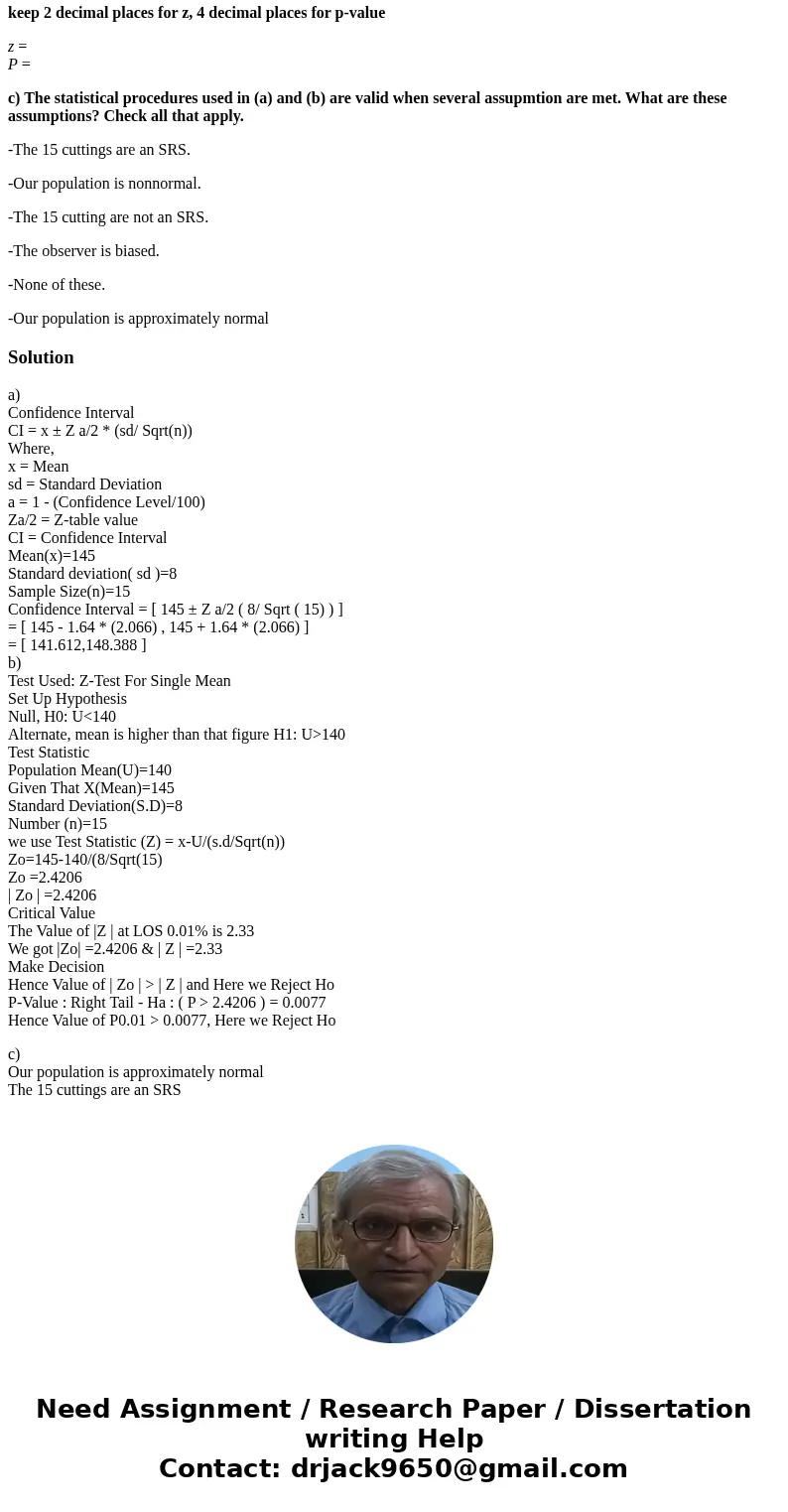keep 2 decimal places for z 4 decimal places for pvalue z P
keep 2 decimal places for z, 4 decimal places for p-value
z =
P =
c) The statistical procedures used in (a) and (b) are valid when several assupmtion are met. What are these assumptions? Check all that apply.
-The 15 cuttings are an SRS.
-Our population is nonnormal.
-The 15 cutting are not an SRS.
-The observer is biased.
-None of these.
-Our population is approximately normal
Solution
a)
Confidence Interval
CI = x ± Z a/2 * (sd/ Sqrt(n))
Where,
x = Mean
sd = Standard Deviation
a = 1 - (Confidence Level/100)
Za/2 = Z-table value
CI = Confidence Interval
Mean(x)=145
Standard deviation( sd )=8
Sample Size(n)=15
Confidence Interval = [ 145 ± Z a/2 ( 8/ Sqrt ( 15) ) ]
= [ 145 - 1.64 * (2.066) , 145 + 1.64 * (2.066) ]
= [ 141.612,148.388 ]
b)
Test Used: Z-Test For Single Mean
Set Up Hypothesis
Null, H0: U<140
Alternate, mean is higher than that figure H1: U>140
Test Statistic
Population Mean(U)=140
Given That X(Mean)=145
Standard Deviation(S.D)=8
Number (n)=15
we use Test Statistic (Z) = x-U/(s.d/Sqrt(n))
Zo=145-140/(8/Sqrt(15)
Zo =2.4206
| Zo | =2.4206
Critical Value
The Value of |Z | at LOS 0.01% is 2.33
We got |Zo| =2.4206 & | Z | =2.33
Make Decision
Hence Value of | Zo | > | Z | and Here we Reject Ho
P-Value : Right Tail - Ha : ( P > 2.4206 ) = 0.0077
Hence Value of P0.01 > 0.0077, Here we Reject Ho
c)
Our population is approximately normal
The 15 cuttings are an SRS


 Homework Sourse
Homework Sourse